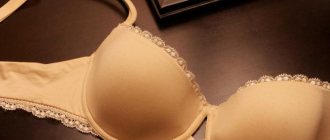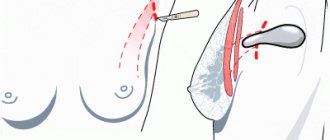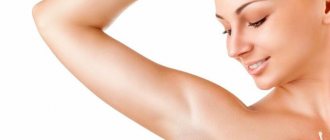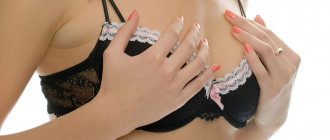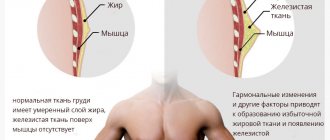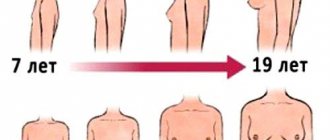A beautiful bust is the dream of many women!
The owner of beautiful breasts radiates confidence and sexuality. However, it is extremely important that not only external beauty, but also the health of the mammary glands, gives a woman joy of life and confidence in the future. Every representative of the fair sex needs to avoid pathological changes in the breasts that adversely affect the general condition of the female body. After all, breasts are nothing more than mammary glands - a paired organ of the reproductive system responsible for the secretion of milk - the main food product of future generations.
Age-related development of mammary glands
The laying of the organ begins at 6 weeks, after the implantation of the embryo into the wall of the uterus. By the fourth month, the first milk ducts appear, and the nipples - by the seventh. Formation ends by 3-4 years. Growth begins when girls reach puberty. A slight increase is also noticeable in boys, but normally it stops.
Under the influence of estrogens produced by the ovaries, the milk ducts branch and lengthen. During the menstrual cycle, changes accelerate due to the cyclic production of progesterone. Normally, every woman feels engorgement and slight soreness before menstruation. The final formation of the mammary glands is completed during pregnancy.
The structure and purpose of the mammary glands
The main function of the female breast is lactation. The organ consists of several types of tissue - adipose, connective, glandular (alveoli) and milk ducts. The size depends on the total amount of tissue, and development depends on the alveoli. The formation of glandular tissue depends on hormonal levels.
The alveolus is attached to the pectoral muscles and is divided into lobules, between which there is adipose and connective tissue. The connective tissue lobes are penetrated by milk ducts. During the body's transition to menopause, glandular tissue gradually degenerates into adipose tissue.
The outside of the mammary glands is crowned by a nipple - a halo with a protrusion. Location - at the level of 4-5 ribs. In nulliparous women, the nipple is often cone-shaped; after breastfeeding, it takes on the shape of a cylinder. The color of the halos varies from pink to dark.
Breasts are fat. Women's breasts are known to consist of 90% adipose tissue.
Therefore, when following a diet, the bust rapidly loses volume. For every kilogram of excess weight you lose, you typically lose 20 grams of your breast mass. And this despite the fact that the total mass of the mammary glands is 150-400 grams. Lose weight by 4-9 kg - and you can safely choose underwear at least a size smaller. But getting back to your previous shape is much more difficult: just gaining weight is not enough - most likely, your bust will simply be saggy
.
It is necessary to perform physical exercises to maintain a beautiful breast shape. The fat layer that makes up your dignity, of course, cannot be pumped up, but you can strengthen the muscle tissue located deeper. When the pectoral muscles are strengthened, the bust, no matter its size, becomes firmer and lifted. High breasts can be achieved at home. The result is guaranteed after 1.5-2 months of training. The main thing is regularity. These exercises are simply necessary for everyone who wants to lose weight quickly, so that the losses of the “Upper 90″ are not So Obvious, as well as for Girls Over 25 who Want to Maintain a Young and “Fresh” Look.
“Prayer” (do the exercise 10 times a day). Stand with your feet shoulder-width apart and your back straight. Starting position: fold your arms at chest level with your palms facing each other. This pose resembles the position of a person praying. Squeeze your palms, the tension should be strong. Hold the pressure for 20 seconds, then relax and shake your hands.
“Librarian Charging” (repeat the exercise 20 times a day). To perform this exercise, you need to take two books of the same weight and shape (or two dumbbells of the same weight. Stand with your back straight, feet shoulder-width apart, take the weights in your hands. Extend your arms straight in front of you at chest level, turn your palms up. Slowly stand up on toes and at the same time spread your straight arms to the sides. Remember that your hands should be at chest level. Then smoothly return to the starting position, without lowering your arms and standing on your entire foot.
Push-ups (do the exercise 15 times a day). Take a plank pose (rest your toes and palms on the floor, your back is straight, your arms are perpendicular to the floor, your palms are directly under your shoulders. Watch your position: do not arch in the lower back, do not lower your head and do not stick out your buttocks. Perform push-ups in three configurations, depending on palm positions. In the first set (5 push-ups each set), place your hands with your fingers forward, in the second with your fingers outward, and in the third with your fingers strongly inward, your hands are spaced slightly wider than your shoulders. Thus, if it is difficult to do push-ups with straight legs, rest your knees to the floor and continue doing the exercise.
Bench press (perform the exercise 15 times a day). Starting position: lying on your back, legs bent at the knees. 1-2 kilogram dumbbells in your hands, arms at chest level, elbows bent. Stretch your arms up perpendicular to the floor, fists with dumbbells in one line. Lower your arms to the starting position. Exhale as you lift the dumbbells, and inhale as you lower your arms.
“Cat” (do the exercise 10 times a day). Starting position: lying on the floor on your stomach. Sit on your heels, place your hands in front of you shoulder-width apart, bend them at the elbows, and place your palms on the floor. Straighten your legs, leaning on your hands, lift your upper body smoothly with tension. At the end point of the movement, your shoulders should be directly above your palms, your legs should be flat on the floor, your back arched, and your face facing the ceiling. Hold the tension at the end point for 10 seconds.
When performing exercises to strengthen the pectoral muscles, remember: - Work “to the Limit”. That is, when you feel that your muscles are “burning” and you can no longer perform the exercise, do the last jerk - another 2-3 repetitions. - Breathe correctly. When you tense your muscles, exhale; when you relax, inhale. That is, at the point of maximum tension, for example, during the bench press itself, you exhale, and when returning to the starting position, you inhale.
Anomalies in the structure of the mammary glands
Breast malformations can occur due to genetic predisposition, difficult pregnancy, the influence of external factors - radioactive radiation, the use of certain medications, trauma.
Make an appointment with a mammologist by phone:
8
Types of pathologies:
- the presence of additional mammary glands - polymastia, the absence of one of the paired organs - monomastia, both - amastia;
- extra nipples - polythelia;
- anomalies in location - asymmetry and ectopia, displacement from place;
- changes in shape can be divided into aesthetic and pathological. The first group includes micro- and macromastia - a lack and excess of adipose tissue. Pathologies include aplasia - underdevelopment of glandular tissue, and hyperplasia - tissue proliferation at the cellular level, which increases the risk of tumor formation.
Correction is required if the breasts hurt, as well as if there is a visually visible aesthetic defect that causes moral suffering to the woman.
Breast diseases
The main symptoms that indicate pathological changes in breast tissue are quite general. The chest begins to hurt, engorgement increases. During inflammatory processes, the lymph nodes in the armpits enlarge and the temperature rises. On examination, compactions are felt. The most commonly diagnosed diseases are:
Lactostasis
Congestion in the ducts of the mammary glands in nursing women occurs due to partial or complete blockage and leads to lactostasis. In this case, the process of breastfeeding is complicated, up to the inability to continue feeding, and, moreover, untimely treatment of the problem leads to a rather dangerous disease - mastitis. More details >>.
Mastitis
An inflammatory process in the tissues of the mammary glands that develops during the postpartum period. Appears due to the introduction of pathogenic bacteria - mainly staphylococci - from the outside, through cracks in the nipples, or through the bloodstream, if there is a source of infection in the body. Lactostasis - stagnation of milk - in the milk ducts, creates favorable conditions for the proliferation of bacteria. More details >>.
Breast cyst
New growths in the breast (multiple or single cavities), filled with fluid, at the initial stage without an inflammatory process. Clear diagnosis and treatment are necessary to prevent the development of oncological processes. More details >>.
Fibroadenoma
A benign breast tumor that occurs as a result of hormonal imbalance in a woman. In addition, the causes of fibroadenoma can be problems in the functioning of the thyroid gland, pituitary gland, adrenal glands, as well as some gynecological diseases and other factors. More details >>.
Mammary cancer
A formidable disease that needs to be stopped in the early stages of its occurrence, preventing further development - pathological changes not only in the breast tissue, but also in the surrounding tissues, and preventing damage to the lymphatic system. To do this, it is necessary to regularly, at least once a year, consult a mammologist and, if necessary, an oncologist. More details >>.
If you have any uncomfortable, painful sensations in the chest, do not delay the examination; it is much easier to eliminate the problem at the beginning of the pathological process than to deal with it when the development of the disease has gone far enough!
Cost of mammologist services:
| — Service code — | - Name - | — Price — |
| Mammalogy | ||
| 12_01 | Initial appointment with a mammologist | 1800 |
| 12_02 | Repeated appointment with a mammologist | 1300 |
| 12_03 | Ultrasound-guided tumor puncture | 4900 |
| 12_10 | Resolution of lactostasis by a lactation specialist (1 breast) | from 1500 |
| Ultrasound diagnostics | ||
| Mammalogy | ||
| 90_16 | Ultrasound of the mammary glands (7-10 days of the cycle) with Doppler and regional lymph nodes | 1800 |
If you feel chest pain or discomfort, don't wait - call us!
8
How to reduce breasts. Is it possible to reduce breasts without surgery?
Contrary to popular belief, having a large bust size is not at all as healthy as it might seem at first glance. There can be many reasons for breast reduction. It loses its shape faster and sags. For those with a large bust, it is difficult to choose clothes and create an elegant look.
In addition, large breasts cause serious diseases of the spine, such as osteochondrosis, scoliosis, pain in the cervical and lumbar regions. Women are also at risk of developing breast diseases.
Of course, the simplest is surgery, but it is not suitable for everyone. Firstly, the intervention is dangerous to health, especially if you are allergic to medications or anesthesia. In addition, after the operation, scars remain, although small and safely hidden, they are there. And finally, the woman is deprived of the opportunity to breastfeed her child, because a significant part of the gland is excised.
It is also worth paying attention to the rather high price of the operation. Considering all these points, women are looking for other methods of breast reduction.
But any method will not give an instant result, so for some time you will have to resort to “optical illusion”. It is possible to visually reduce breast size as follows:
- The bra should be closed in the armpit area and have wide straps.
- All kinds of tops should be slightly elongated, short ones draw attention to large breasts, and unattractively puff up and ride up.
- Any decoration or volume on the upper body such as shoulder pads, puffed sleeves, frills and frills should be avoided.
- Jackets and jackets should be chosen with a deep neckline, narrow lapels, and a loose fit.
- When choosing dresses, tops and blues, you should pay attention to plain models with clear undercuts, a loose or semi-fitting cut.
Expert opinion
Tatyana Somoilova
Cosmetology expert
All of the above tips will help make your breasts smaller by almost a full size. To reduce their bust size, many people decide to wear dark, loose-fitting clothes, but this is a big mistake. So as soon as the figure becomes shapeless, extra pounds appear, even if they are not there.
The ideal option would be semi-fitted items that focus attention on the waist. It is also necessary to maintain balance in the lower body.


